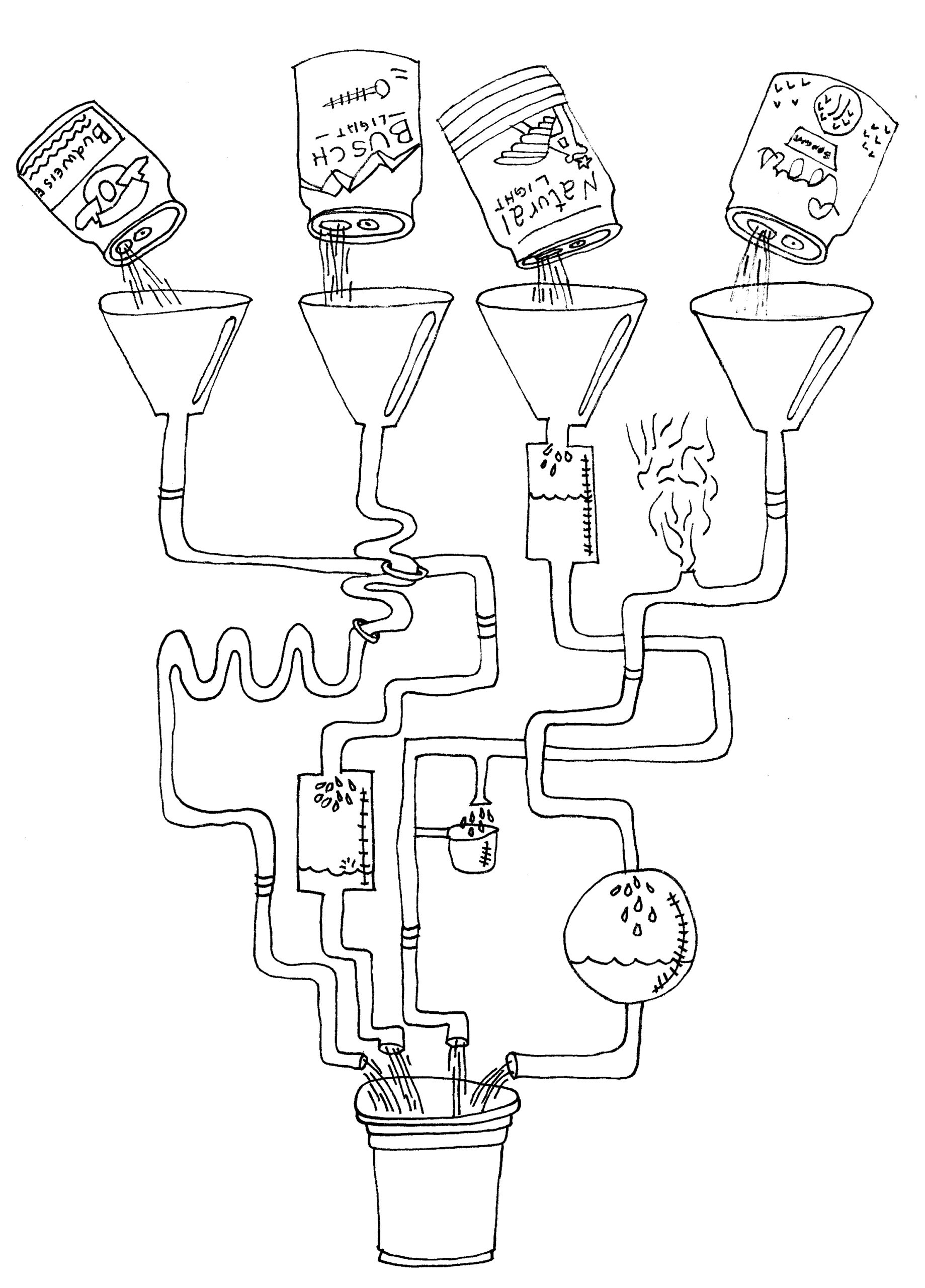Sir mix-a-lot: sampling the lite beer experience
October 26, 2018
It has been a tough couple weeks for beer. Nevertheless, we’re back providing our readers with the content they crave about the worst beers on the market. We were chided after our last review by the proud staff of the Orient that this is a “beer column,” and so we actually need to “write about beer.” To make up for this grave omission, we are bringing to you a surplus of beer this week—volume and variety, not word count— pushed together in ways that neither the father, the son nor the Brothers Bissell ever intended.
Simon has convinced himself that wine blends are hot right now. Our cursory Google search has shown us that wine blends started because of winemakers’ decision to plant many different species of grape. This was done to ensure that despite frequent environmental hardship—the United Nations says we’re hosed, by the way—they would have enough viticultural diversity to produce a reliable stock of beverage. Similarly, our first foray into blending was an experiment of dubious ingenuity during the historic blackout of the fall of 2017, when our local brew-pubs had closed. Just as our ancestors searched their storm-ravaged vineyards for surviving grapes, we wandered around a post-inebriated wasteland collecting half-consumed cans until we had enough swill to make a complete beverage. Reliability in a jam? Check. But mixing together a stout, a cider and the remnants of a poorly shotgunned Claw left a little to be desired in terms of taste. Trying times, indeed.
A Bud, Busch, “Natty” and Coors were gathered from across campus. One beer, which requested to remain anonymous, came from an Orient event—Bowdoin’s fourth estate, at times, does cut loose. This journey was, in itself, an odyssey of Greco-mythological proportions to be recounted whenever we decide to pivot to podcasting. We poured them all together in a pot, mixed until consistent, then each ladled ourselves a pint.
Early notes: Beer blending, even when intentionally done, is bad. Most hybridization seeks to distill the best parts of each item, creating a whole that is greater than the sum of its parts—see: “Moneyball” (2011). We thought we’d get a goldendoodle, an animal that’s hypoallergenic like a poodle and has the temperment of a golden retriever. Instead we got dumped with a snooty, sheddy, incontinent disaster of a dog.
The Bud lent an overwhelming breadiness. We heard their brewing process involves tossing a multi-grain loaf into a blender. The Natty added a flavor profile of fetid water. This trademark taste can only be explained by a company deciding to sink its money into launching a can into space rather than developing a well-rounded beverage. (That being said, Anheuser Busch has a 100 percent success rate of rocket launches—admittedly, higher than our friends at the National Aeronautics and Space Administration).
The Coors selling point is that it is “As cold as the Rockies,” but they fail to mention that it actually tastes like rocks. We think this probably has something to do with their “cold lagered” brewing process, whatever that means. The Busch introduced notes of sweet crude oil and regret—not unlike the notes that America’s sordid dealings in the Middle East have added to our otherwise pristine political track record. Do not see: “Vietnam War” (1965), et al. Along those lines, we believe there is an apt comparison to be made between our brave experiment and America’s two catastrophic invasions of the Persian Gulf: solid in theory, but botched in the field. And, upon a second consideration, maybe the theory wasn’t all there to begin with. In the end, both blending and nation-building might be misguided.
That being said, this brew is a potent potable—our quant assured us that mixing four 5% beers means this sauce clocked in at a hefty 20% ABV (Ethan is a math minor). Our blend was a combination of several individually offensive flavors that were then mangled together to form something far worse. It reminded us of a recently published and similarly distasteful op-ed. In a moral and decent country no one would imbibe this beverage again—but for whatever reason, half the nation loves it. Now we’re all doomed to drink this deplorable concoction till we die.
In conclusion, this exercise has revealed to us the false nature of freedom under capitalism. All we have is choice in the consumer sphere, except that choice is between four lite beers which are basically the same. And terrible. Nonetheless, the beer proved effective in pacifying us—a true opiate of the masses. We weren’t about to cast off the yoke of oppression in our inebriated state. The revolution will have to wait.
Sheesh.


Comments
Before submitting a comment, please review our comment policy. Some key points from the policy: